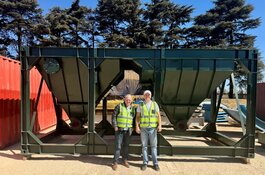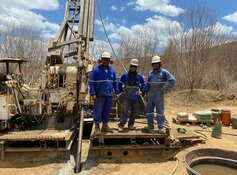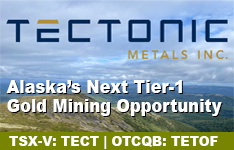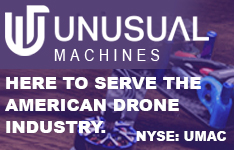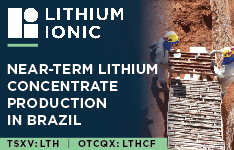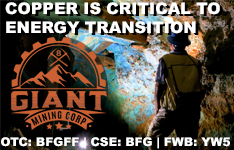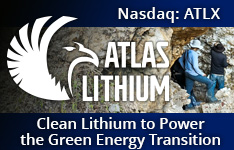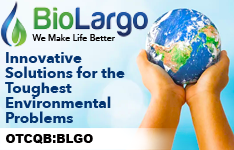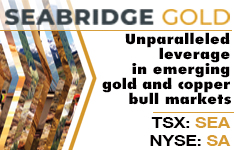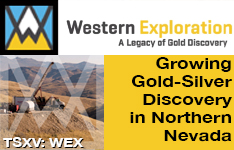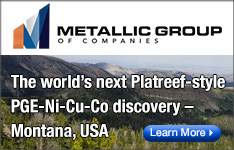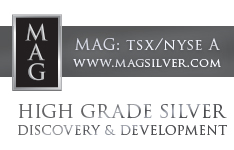Volt Lithium Corp. (VLT:TSV; VLTLF:US; I2D:FSE) announced it has received a US$2 million grant from the State of North Dakota to support the field deployment of its direct lithium extraction (DLE) technology. The funding, delivered through Volt's collaboration with Wellspring Hydro, follows a previously awarded US$500,000 grant from the North Dakota Industrial Commission and is part of the state's clean sustainable energy and renewable energy programs.
According to Volt, the grant will be used to procure equipment and conduct viability testing of the company's proprietary DLE technology in the Bakken formation. The initiative builds on a successful field study agreement announced in December 2024. Alex Wylie, Volt's president and CEO, said in a news release, "We are deeply grateful to the State of North Dakota for this continued support, which not only reflects confidence in our DLE technology but also underscores our shared goal of strengthening the domestic supply chain for critical minerals."
Volt's approach to lithium production differs from traditional mining methods by extracting lithium directly from oilfield brines, producing high-salinity water as a byproduct of oil and gas operations. The company's proprietary DLE process removes up to 99% of contaminants before concentrating lithium into battery-grade lithium carbonate and lithium hydroxide monohydrate.
The North Dakota field project is part of Volt's broader U.S. expansion strategy. The company has already begun producing lithium in the Permian Basin, Texas, where it achieved its first lithium production in September 2024 in partnership with a major energy operator. These operations currently process over 10,000 barrels of brine per day and have demonstrated extraction rates of 99% lithium from brine. According to Volt, their DLE process is capable of extraction and operating costs below below US$2,900 per tonne of lithium carbonate equivalent (LCE), supporting potential cost advantages even in volatile market conditions.
Volt's expansion into North Dakota represents a step toward regional diversification of U.S.-based lithium supply. The company stated that "successes [in Texas] will be seamlessly transferred to other basins — beginning with North Dakota, ensuring efficient deployment and continuous innovation across regions."
Sector Insight: Lithium and Battery Materials
According to a March 28 report from Stratview Research, the global lithium-ion battery separator market was projected to grow at an annual rate of 19.1% through 2030, reaching US$24.3 billion. The study identified polyethylene (PE), particularly ultra-high molecular weight polyethylene (UHMWPE), as the most preferred separator material due to its chemical and thermal stability, low electrical conductivity, and high porosity. These features were said to be essential for meeting the performance and safety requirements of modern batteries, particularly for EVs and consumer electronics.
The lithium sector continued to demonstrate growing significance across multiple industries in early 2025, with increasing emphasis on domestic supply chains and cost-effective energy solutions.
Technical Analyst Clive Maund identified a strong technical setup for Volt Lithium, suggesting the stock was approaching a breakout from an intermediate base pattern formed since November.
In a press briefing on April 1, Union Minister Nitin Gadkari emphasized the importance of lithium to the electric vehicle (EV) transition, highlighting that "the price of lithium, which was US$150 per kilowatt a few years ago, has now come down to nearly US$100."
He stated that this reduction in lithium battery costs could make EVs more affordable and accessible, further accelerating the global shift away from fossil fuels. Gadkari described lithium-ion battery development as "not just an environmental necessity but also an economic imperative," pointing to lithium's dual role in reducing pollution and alleviating the burden of fuel imports.
Additional momentum in the North American market was documented in an April 1 report from IMARC Group. The North American lithium-ion battery market was valued at US$20 billion in 2024 and was expected to reach US$49.7 billion by 2033, reflecting a compound annual growth rate of 10.7%. The report noted that demand was being driven by new EV technologies, renewable energy storage projects, and portable electronics. It also highlighted U.S. federal support measures, such as the Inflation Reduction Act, which aimed to encourage domestic battery production and recycling. IMARC Group stated that "energy storage systems are becoming central to grid stability," particularly in states like California and Texas, where large-scale deployments are already underway.
The overall relevance of lithium in the energy transition was also underscored in commentary from Stocks Down Under on April 1, which noted that "lithium has emerged as one of the most vital resources for a cleaner future." While lithium prices experienced a sharp correction in 2023, the publication emphasized lithium's continued importance across sectors, including EVs, renewable energy, and electronics. The International Energy Agency was cited as forecasting that lithium demand could grow more than fortyfold by 2040 compared to 2020 levels.
Upcoming Catalysts and Strategic Positioning
Volt's current activities in North Dakota are part of a phased strategy to scale its proprietary DLE technology across North American oilfields. According to the company's March 2025 investor presentation, Volt expects to deploy a field unit in the Bakken formation in the second quarter of 2025. This deployment is designed to assess both the technical and economic viability of producing lithium from oilfield brines in the region.
The Bakken's lithium concentrations, estimated at 45–70 milligrams per liter, fall within the effective operating range of Volt's DLE system, which has already demonstrated high recovery rates and fast extraction times — as low as 30 minutes — at other sites. Volt's field simulation center in Calgary, Alberta, has also supported the company's development by processing and testing oilfield brines from various global regions.
The company's repeatable deployment model and in-house ability to produce lithium chloride, carbonate, and hydroxide products allow for flexible responses to regional opportunities. This includes potential scale-up across both U.S. and Canadian oilfields. Notably, the Permian Basin project remains the company's core focus and a foundational source of operational data.
As Volt continues expanding in the U.S., the company may benefit from increasing industry and government support aimed at onshoring lithium production. Volt's strategic collaboration with a major Permian Basin operator, which included a US$1.5 million investment, further enhances its access to existing infrastructure and technical expertise.
The North Dakota grant serves as both a financial and regulatory endorsement of Volt's DLE approach, strengthening its competitive position in the race to develop low-cost, domestic lithium sources.
Analysts Highlight Volt Lithium's Progress in Low-Cost Lithium Extraction
On January 23, Michael Ballanger of GGM Advisory Inc. issued a Buy rating on Volt Lithium, citing the company's progress in extracting lithium from oilfield brine as a key differentiator in the sector. He emphasized Volt's ability to produce battery-grade lithium at low operational costs, which positioned it well in a shifting market environment. Ballanger also noted that recent developments had improved Volt's overall investment profile amid signs of recovery in the lithium sector.
 Streetwise Ownership Overview*
Streetwise Ownership Overview*
Volt Lithium Corp. (VLT:TSV;VLTLF:US;I2D:FSE)
In a March 5 research update, Technical Analyst Clive Maund identified a strong technical setup for Volt Lithium, suggesting the stock was approaching a breakout from an intermediate base pattern formed since November. Maund highlighted the company's achievement with its Generation 5 Field Unit in the Permian Basin, which had reached 99% lithium recovery, as a noteworthy milestone. He also observed that Volt shares had already more than doubled from their 2024 lows, signaling notable performance for early investors.
Ownership and Share Structure
Refinitiv provided a breakdown of the company's ownership and share structure, showing that management and insiders collectively held approximately 14% of the company.
According to the company, James Alexander Wylie owned 7.97%, Martin Scase held 4.53%, Warner Uhl owned 0.81%, Morgan Tiernan held 0.35%, and Kyle Robert Hookey held approximately 1% through a combination of direct and indirect holdings. Hookey’s indirect ownership was held through Eagle Claw Investments Pty Ltd. ATF Hookey Investment Trust and Eagle Claw Investments 2 Pty Ltd. ATF Hookey Retirement Fund, in addition to his directly held shares.
Refinitiv reported that institutions owned less than 1% of the company, listing Eagle Claw Investments Pty. Ltd. with a 0.98% stake.
According to Reuters, the company had 165.97 million shares outstanding and a market capitalization of CA$54.77 million. It traded in a 52-week range of CA$0.16 to CA$0.49.
| Want to be the first to know about interesting Cobalt / Lithium / Manganese investment ideas? Sign up to receive the FREE Streetwise Reports' newsletter. | Subscribe |
Important Disclosures:
- Volt Lithium Corp. has a consulting relationship with Street Smart an affiliate of Streetwise Reports. Street Smart Clients pay a monthly consulting fee between US$8,000 and US$20,000.
- As of the date of this article, officers and/or employees of Streetwise Reports LLC (including members of their household) own securities of Volt Lithium Corp.
- James Guttman wrote this article for Streetwise Reports LLC and provides services to Streetwise Reports as an employee.
- This article does not constitute investment advice and is not a solicitation for any investment. Streetwise Reports does not render general or specific investment advice and the information on Streetwise Reports should not be considered a recommendation to buy or sell any security. Each reader is encouraged to consult with his or her personal financial adviser and perform their own comprehensive investment research. By opening this page, each reader accepts and agrees to Streetwise Reports' terms of use and full legal disclaimer. Streetwise Reports does not endorse or recommend the business, products, services or securities of any company.
For additional disclosures, please click here.


